You searched for: 谷歌seo霸屏投放靠谱【TG飞机:@bapingseo】摩纳哥谷歌留痕推广【TG电报:@bapingseo】資金程序源碼網站【Telegram:@bapingseo】csgo比赛押注巴黎人注册送39元欢迎您?20220707C4hV7w.html
<< Previous | Displaying results 201-250 of 644 for "谷歌seo霸屏投放靠谱【TG飞机:@bapingseo】摩纳哥谷歌留痕推广【TG电报:@bapingseo】資金程序源碼網站【Telegram:@bapingseo】csgo比赛押注巴黎人注册送39元欢迎您?20220707C4hV7w.html" | Next >>
-
Feige Schwarzfink
ID CardFeige was born to a religious Jewish family in the small village of Szydlowiec [in Poland]. She lived with her parents, six brothers and sisters, and elderly grandparents in a small house which, like many homes in the village, had no running water, indoor plumbing, or electricity. Feige's father was a shoemaker. 1933-39: In the afternoons after public school Feige studied at a Jewish religious school. Although her parents didn't know it, she attended meetings of the Bund, the Jewish Socialist party. Feige…

-
Rena Gani
ID CardRena and her family were Romaniot Jews, a group that had lived in Greek cities and the Balkans for more than 1,100 years. The town of Preveza, located on the Ionian seashore, had 300 Jews. Rena's father had a small textile shop and her mother stayed at home to care for Rena, her sister and her three brothers. 1933-39: When Rena's family moved to the nearby town of Ioannina, she completed Jewish primary school there. The school was sponsored by the French organization Alliance Israelite Universelle, and…
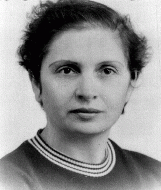
-
Claude Brunswic
ID CardClaude was one of five children born to Jewish parents in the university city of Heidelberg. His father, a physician specializing in internal medicine, had his practice on the first floor of the apartment building in which the family lived. Claude was an avid swimmer until November 1932, when local Nazi party edicts forbad Jews to use the city pool where he swam. 1933-39: In January 1933, just after Hitler became chancellor of Germany, hoodlums attacked Jewish-owned businesses in Heidelberg. They broke…
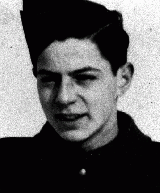
-
Helena Manaster
ID CardHelena was the eighth of 10 children born to a Jewish family in the town of Lesko. Her father was a landowner. When Helena was a young girl the family moved to nearby Orelec, where they had a summer home. As there were no schools in Orelec, Helena and her siblings continued attending school in Lesko. Later, Helena traveled three hours by train daily to attend the nearest high school, which was in Przemysl. 1933-39: The German army invaded Poland on September 1, 1939. By the beginning of October the…

-
Amalie Petranker
ID CardAmalie was one of three daughters born to Jewish parents. The family lived in Stanislav [Stanislawow], Poland. Her father was an ardent supporter of resettlement in Palestine, and dreamed of moving his family there to help build the Jewish homeland. Amalie and her sisters attended private Hebrew primary and secondary schools to help prepare them for their eventual immigration to Palestine. 1933-39: In September 1939 Stanislav [Stanislawow] was occupied by the Soviet army. Amalie's father lost his job in…
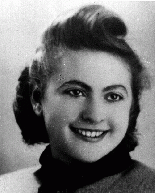
-
Celia Petranker
ID CardCelia was the youngest of three daughters born to Jewish parents living in Stanislav [Stanislawow], Poland. Her father was an ardent Zionist, and dreamed of moving his family to Palestine to help build a Jewish homeland. Celia and her sisters attended private Hebrew primary and secondary schools to help prepare them for their eventual immigration to Palestine. 1933-39: Celia's oldest sister, Pepka, left for Palestine one week after the Germans invaded Poland on September 1, 1939. Pepka's departure was…
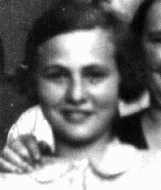
-
Faiga Grynbaum
ID CardFaiga was one of nine children born to religious Jewish parents in Starachowice, a town in east-central Poland. Their small one-story house served as both the family's residence and their tailor shop. Faiga worked in the shop sewing women's clothes; the tailoring was often done in exchange for goods such as firewood or a sack of potatoes. 1933-39: In 1935 Faiga married Haskel Ochervitch. She moved to Kielce, a larger town some 25 miles southwest of Starachowice, where her husband worked selling meat to…

-
Samson Reichstein
ID CardSamson was raised by Jewish parents in Tarnopol. His father died when Samson was 13, and Samson went to work to help support his mother and four brothers and sisters. In October 1918 Samson married Kaethe Ert, and the couple moved to Hanover, Germany, where Samson worked as a traveling salesman. Their son Herbert was born in 1920. 1933-39: In 1938 Samson and Kaethe got their son an exit visa on America's Polish quota (since they were Polish citizens). Later that year, the Gestapo came to their door with…
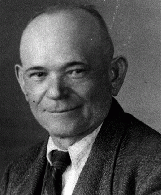
-
Welwel Kisielnicki
ID CardWelwel lived with his wife, Feiga, and their three children in the small, predominantly Jewish town of Kaluszyn, which was 35 miles east of Warsaw. The Kisielnickis were religious and spoke Yiddish in their home. Welwel was a merchant and often traveled, by horse and wagon, to Warsaw on business. 1933-39: The Kisielnicki family's hopes that the war wouldn't reach Kaluszyn have been shattered. Last week, a German plane flew over their town and dropped a bomb on people waiting in line outside a bakery.…

-
Rojske Kisielnicki Sadowsky
ID CardThe second of three children, Rojske was born to Jewish parents living 35 miles east of Warsaw in the small predominantly Jewish town of Kaluszyn. Rojske's mother was a housewife and her father was a merchant who often traveled, by horse and wagon, to Warsaw on business. When Rojske was in her twenties, she married Welwel Sadowsky, a fruit dealer. 1933-39: After war broke out last week, German forces fought Polish troops in a battle right here in Kaluszyn. Half the town has been flattened by shelling, and…

-
Mikulas Diamant
ID CardMikulas and his German-speaking Jewish family lived in the town of Hlohovec. His family owned a large farm and his father was a rancher. In 1932, due to declining economic conditions, Mikulas's father began to sell all of his property. Then the family moved to the city of Bratislava, where they had many relatives. 1933-39: Mikulas's father worked with his uncle in the wholesale paper business. Mikulas worked part-time in a workshop as an electrician and he went to high school. In 1938 his family began to…
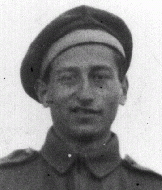
-
Maria Schimek Dicker
ID CardMaria's Jewish family lived in a Slovakian manufacturing town. When her father's match factory failed, the family of seven moved to Budapest. In her early twenties, Maria opened a flower shop, but she gave it up when she married and moved to Ujpest, outside Budapest. Maria then stayed at home to raise her five children. Her husband owned a large furniture store, and she often gave him business advice. 1933-39: Maria loves having all her grown children gathered around her at the dinner table, enjoying her…
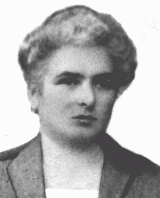
-
Esther Morgensztern
ID CardThe fourth of five children, Esther was born to Jewish parents living 35 miles east of Warsaw in the small predominantly Jewish town of Kaluszyn. Esther's mother and grandmother ran a newspaper kiosk in the town, and her father worked as a clerk at the town hall. 1933-39: Next year would have been Esther's last year at school, but she won't be able to graduate. War has broken out between Poland and Germany, so the schools have closed. A big battle took place here in Kaluszyn. The town was heavily shelled…
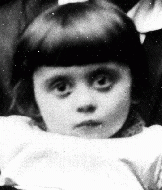
-
Meyer (Max) Rodriguez Garcia
ID CardMax was born to a Jewish family in Amsterdam. He lived in a working-class district occupied by many diamond polishers, of which his father was one. In the 1920s and 30s Amsterdam was a cosmopolitan city with a diverse population. Though his father hoped Max would follow him in the diamond trade, Max dreamed of becoming an architect. 1933-39: Max's happiest years were with close friends in school. His father encouraged him to learn by bringing home newspapers to help his English. After 1933 German Jews…
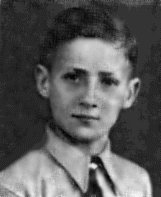
-
Bernard Rechnitz
ID CardBernard was raised by Jewish parents in the small southwestern Polish town of Bedzin. In 1930 Bernard moved with his wife, Ruchla, to the nearby city of Katowice, where he owned a wholesale leather business. The couple lived with their two children, Moses and Genia, in a three-bedroom, upper-floor apartment on Jordana Street. 1933-39: In 1939 Bernard, who was a Zionist, decided the family should emigrate to Palestine [the Yishuv]. His son, Moses, had been the target of antisemitic taunts at school.…
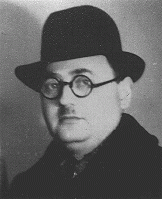
-
Gertrud Gruenbaum
ID CardBorn to a Jewish father and a Catholic mother, Gertrud grew up in Vienna. Trude, as she was affectionately called, attended a public secondary school, where half of her classmates were Jewish. At age 7 she rejected music lessons for classes in dancing and acting. Trude wanted to be like Greta Garbo. She launched an acting career at age 18, assuming the stage name Trude Hermann. 1933-39: Because Gertrud was Jewish she couldn't get acting jobs in Austria and nearby Sudetenland. In 1937 her agent found work…

-
Pinchas Galperin
ID CardPinchas was one of 16 children born to a Jewish family. Only nine of the Galperin children lived to adulthood. Pinchas' father worked as a typesetter for a Jewish newspaper and his mother ran a small grocery store. After World War I, Pinchas married Sara Bernstein and the couple moved to Siauliai, Lithuania, where they raised three children. 1933-39: Pinchas and Sara owned and ran a dairy store where they sold milk, butter and cheese that they bought from local farmers. Every morning they would rise early…
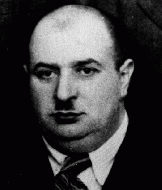
-
Judith Gabriel Dichter
ID CardJudith, nicknamed Julie, was one of five children born to religious Hungarian-Jewish parents in the Burgenland, the eastern province of Austria that was part of Hungary until 1921. She married Tobias Dichter, a traveling salesman from Vienna who had sold merchandise to her father. The Dichters moved to an apartment in Vienna's Jewish Leopoldstadt district, where they raised two children. 1933-39: The Germans have annexed Austria. One week after the annexation, Germans came to Julie's apartment to take her…
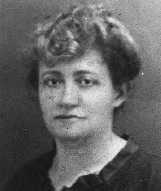
-
Aron Tabrys
ID CardAron was the second of six children born to Jewish parents in Vilna, a city known as a center of Jewish cultural life. He was called Arke by his friends and family. Aron's father supported his large family on the meager income of a chimney sweep. 1933-39: As a child Aron attended a Jewish day school, and then went on to attend a public secondary school. When he was 14 his father had an accident which rendered him blind, and Aron had to start working full-time to support the family. Aron belonged to an…

-
Julius (Julo) Levin
ID CardJulo was born to a Jewish family in the city of Stettin in northeastern Germany. From an early age Julo showed an interest in art; at 6 he had collected more than 3,000 pictures. His family hoped he would become a businessman, but his interest in painting absorbed all his energy. In 1926 he graduated from art school and by 1931 he secured his first commission in Duesseldorf. 1933-39: Until the Nazis came to power in 1933, Julo was a highly regarded artist. The Nazis' strict interpretation of art, however,…

-
Norbert Yasharoff
ID CardNorbert was born to a Jewish family in the Bulgarian capital of Sofia. His father, a prominent lawyer, was also active in the Jewish community, heading relief efforts for the city's Jewish orphans. Sofia was home to approximately half of Bulgaria's estimated 50,000 Jews during the mid-1930s. 1933-39: On September 1, 1939, while on a family vacation the Yasharoffs heard over the radio that war [World War II] had begun. Norbert's parents exchanged worried glances; what would happen to them now? Bulgaria had…
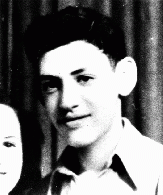
-
Eva Rapaport
ID CardEva was the only child born to nonreligious Jewish parents. Her father was a journalist. Eva enjoyed spending time with her cousin Susie, who was two years older. Eva also took special vacations with her mother. Sometimes they went skiing in the Austrian alps, and on other occasions they stayed at her uncle's cabin along the Danube River. 1933-39: When the Germans annexed Austria in 1938, life changed. Eva's father was harassed by the Gestapo for writing articles against the Germans. Her good friends…
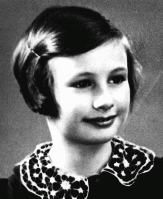
-
Alice Edelstein-Friedmann
ID CardAlice, born Alice Edelstein, was the youngest of two children raised in a Jewish family in the Bohemian village of Hostoun, near Prague. Shortly after Alice was born, her father moved the family to Vienna. There, Alice's father owned a wholesale shoe business. As a child, Alice attended public school and also received a religious education. 1933-39: After graduating from business school, Alice had a hard time finding a job because of the economic depression in Austria. In 1936 her father let her work in…
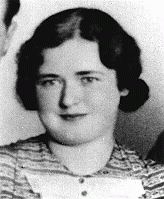
-
Israel Cendorf
ID CardIsrael was born into a religious Hasidic family who hoped he would become a rabbi. But Israel rebelled and apprenticed himself to a printer when he was 16. He read constantly, deepening his sympathy with the workers' struggle, and he soon began to write his own revolutionary songs. His first book of poems, The Red Agenda, was warmly received. 1933-39: In 1933, the year Hitler became chancellor of Germany, Israel moved to Paris. But the city was wracked by unemployment, and Jewish immigrants were in…
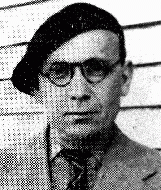
-
Feliks Bruks
ID CardFeliks was the only child of Catholic parents living in Czarnkow, a town close to the German border, some 40 miles north of Poznan. Czarnkow was situated on the Notec River. Feliks' parents owned a mineral water, soda and beer factory. They delivered their goods by horse and wagon to towns throughout the area. His parents also owned a restaurant and 120 acres of farmland. 1933-39: In 1937 Feliks entered the University of Poznan to study pharmacy. His education was cut short when the German army invaded…

-
Ernest Domby
ID CardErnest's father was a professional musician who toured with a Roma ("Gypsy") band and was often away for several months at a time. At home in Teplice-Sanov, a town in the Sudetenland near the Czech-German border, Ernest's mother took care of Ernest and Elizabeth, his younger sister, and the children's invalid grandmother. Ernest's uncles, Rudolf and Viktor, helped the family. 1933-39: In Teplice-Sanov Ernest was expelled from secondary school for being Jewish—his Uncle Viktor then helped to get him into…
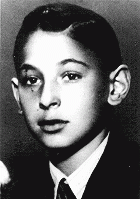
-
Jozef Rapaport
ID CardJozef was raised in a religious Jewish family. When he was a baby, his father died and his mother was left to care for him and his three older sisters. The family was poor, but Jozef was determined to have a good education. He put himself through university in Prague, and then went on to earn a Ph.D. in economics in Vienna. In 1931 he married Leah Kohl, and the couple settled in Warsaw. 1933-39: The Rapaports lived in the suburbs, and Jozef worked as a banker. His daughter, Zofia, was born in 1933. Jozef…
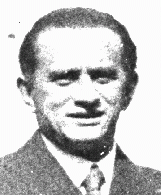
-
Mario Finzi
ID CardMario was the only child of a Jewish couple who were secondary school teachers in Bologna. Like many Italian Jews, his family was well-integrated into Italian society. Even though Fascist leader Benito Mussolini came to power in 1922, Jews in Italy continued to live in safety. Mario played piano as a hobby. When he finished high school in Bologna, Mario went on to study law. 1933-39: In 1938 Mario began practicing law in Milan. But later that year, Mussolini's government issued "racial" laws that…

-
Franco Cesana
ID CardFranco was born to a Jewish family living in the northern Italian city of Bologna. Even though a fascist leader, Benito Mussolini, came to power in Italy in 1922, Bologna's Jews continued to live in safety. Like many Italian Jews, Franco's family was well integrated in Italian society. Franco attended public elementary school. 1933-39: When Franco was 7, Mussolini enforced "racial" laws against the Jews: Franco was expelled from school, and went instead to a Jewish school hastily organized in makeshift…
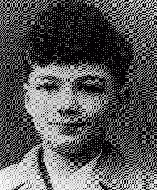
-
Francis Ofner
ID CardFrancis grew up in a city with a Jewish community of 5,000. The Ofners belonged to a synagogue that sponsored many social activities, from sports to care for the elderly. In 1931 Francis began law school at the University of Zagreb. While a student, he organized a service that posted on university bulletin boards the translations of speeches by Nazi leaders broadcast on the radio. 1933-39: By the time Hitler became chancellor of Germany, Francis was heavily involved in trying to unify the university's…
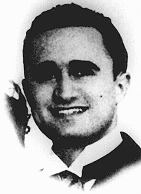
-
Ilija Lemajiþ
ID CardIlija was born in a village in the Croatian part of Yugoslavia. Like his parents and two brothers, Ilija was baptized in the Serbian Orthodox faith. The Lemajic family lived in a part of Croatia inhabited mostly by Serbs. After Ilija had completed grade school, his family moved to the village of Dubovac. When he was 30, he married a local girl and moved to Novska, where he found work. 1933-39: Ilija has a nice wife and two beautiful young daughters. He is employed in the village of Novska in Croatia as a…
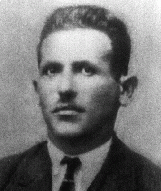
-
Nikola Mrvos
ID CardThe oldest of five children, Nikola was born in a small village in the Croatian part of Yugoslavia. Like his parents, Nikola was baptized in the Serbian Orthodox faith. After receiving his medical degree from Prague University, he married, and in 1912 moved with his wife to Serbia. During World War I he served in the Serbian army, and then settled in Novi Sad where he co-owned a medical clinic. 1933-39: Nikola and his wife raised three children in Novi Sad. Then difficult times brought on by the 1930s…
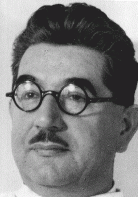
-
Milica Popovic Kuhn
ID CardMilica was the fourth of nine children born to Serbian Orthodox landowners in the Croatian part of Yugoslavia. In 1922 Milica married Milan Kuhn, a Catholic Serb, in a Serbian Orthodox ceremony, and the couple moved to the Macedonian part of Yugoslavia, where Milan was working on hydroelectric projects. In 1932 the couple returned with their young daughter to live in northern Yugoslavia. 1933-39: The Kuhns lived in the city of Zrenjanin in the Vojvodina region where Milan worked as a hydroengineer…
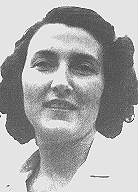
-
Alice Lok
ID CardAlice grew up in a Jewish family in Sarvar, Hungary, near the Austrian border. She had two younger brothers and an older sister. Her father worked for the family's carpet weaving and import/export business and was often away, traveling to their Budapest office. Alice's grandfather was a community leader and president of one of Sarvar's synagogues. 1933-39: Alice had a very special relationship with her grandfather. She admired him. People knew that they could always come to him for help of any kind. He…

-
Ilona Karfunkel Kalman
ID CardOne of four children, Ilona was born to religious Jewish parents living in the village of Erdobenye in the highlands of northeastern Hungary. The Karfunkel's house, on the village outskirts, had a large garden in the back and fruit orchards. Ilona's parents had a small vineyard and a little grocery store. Ilona married Ferenc Kalman, and the couple moved to Hatvan, 36 miles northeast of Budapest. 1933-39: Ilona and Ferenc have always considered themselves Hungarians who happened to be Jewish, and they've…

-
Andras Muhlrad
ID CardThe second of two children, Andras was born to Jewish parents living in a suburb of Budapest. His father was a pharmacist. The Muhlrads lived in a large house with Andras' grandfather and aunts. As a toddler, Andras often played with his older sister, Eva, and their cousins in the big yard behind their home. 1933-39: Andras was 4 when his family moved to their own apartment. It was 1936 when he began primary school and Hitler had already been in power in Nazi Germany for three years. At night his father…

-
Jeno Muhlrad
ID CardJeno was the youngest of five children born to Jewish parents living in a suburb of Budapest. His father was a wholesale merchant who sold beer to restaurants and stores. After receiving a university diploma, Jeno became a pharmacist. He and his wife, Aranka, and their two children, Eva and Andras, shared a large old house in Ujpest with Jeno's father and other members of the extended family. 1933-39: Jeno's friends and family have helped him raise the large amount of money he needs to lease his own…

-
Malvin Katz Fried
ID CardMalvin and her eight brothers and sisters were born to religious Jewish parents in the small town of Buj in northeastern Hungary. The family later moved to the village of Zalkod, where Malvin's father ran a general store. The Katz family lived in a sprawling farmhouse with a large garden and fruit orchards. Malvin married Sandor Fried, the brother of her sister Sadie's husband, Hermon. 1933-39: Malvin's oldest sister, Sadie, who immigrated to the United States many years ago, has come home for a visit.…
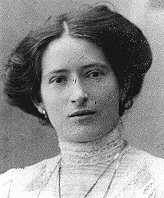
-
Kato Dicker Nagy
ID CardThe fourth of five children, Kato was born to a Jewish family who owned a successful furniture store and lumberyard in Ujpest, five miles from Budapest. As a young girl, Kato enjoyed singing and playing the violin in her family "orchestra" in their large home. She was also athletic, and loved to swim, bicycle and play tennis. Best of all, Kato enjoyed rowing on the Danube with her friends. 1933-39: Newly married, Kato moved to Zagyvapalfalva, a town northeast of Budapest with only five or six Jewish…
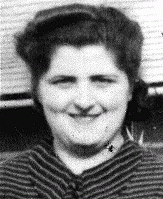
-
Judith Kalman
ID CardJudith was the only child born to a Jewish couple who lived in Hatvan, a small town 36 miles northeast of Budapest. Judith's father worked in his brother's business, marketing grains and other agricultural products purchased from local farms. When she was 3, Judith gave her first public recitation of poetry, an interest that she pursued throughout her childhood. 1933-39: Judith's family wasn't religious--they were Hungarians who happened to be Jewish, and their family was well-liked in Hatvan. But in the…

-
Helen Katz
ID CardThe youngest of eight children, Helen was born and raised in a religious Jewish family living in a town in northeastern Hungary. She was the "baby" of the family and the focus of everyone's hopes and affection. Although her Hebrew name was Hannah, her family called her by her nickname, Potyo, which meant "the dear little one." 1933-39: Helen liked school, but was afraid because some of the kids and teachers hated Jews. There was talk that there might be a war. Her mother wanted them to leave Hungary…

-
Magda Rein
ID CardMagda was the oldest of two children born to observant Jewish parents. They lived in Satoraljaujhely, a town in northeastern Hungary on the Czechoslovakian border. Jews represented some 20 percent of the town's approximately 18,000 persons. Magda's father owned a bakery; her mother was a midwife. 1933-39: At 10 years of age, Magda began accompanying her mother when she attended to births nearby. Her mother helped all women--Jews, Roma (Gypsies) and peasants in the surrounding villages. When Magda was 12,…

-
Reidar Dittmann
ID CardReidar was the third of four sons born to religious Lutheran parents in a small seafaring and whaling town along the Norwegian coast. Reidar's father was a civil servant. Reidar attended public school and dreamed of becoming a musician. 1933-39: Although Reidar was not interested in politics, he sympathized with his Jewish neighbors who had come as refugees from Germany. In fall 1939 he was saddened when Germany attacked Poland and the USSR attacked Finland. Several days later, his oldest brother passed…

-
Martin Spett
ID CardKnown as Monek, Martin was the elder of two children raised by Jewish parents in the large town of Tarnow. His mother was an American citizen who had been raised in Poland. His father worked at the city's tax office. As a child, Martin liked to collect stamps and catch lizards. His parents wanted him to be a pharmacist, but he wanted to be an artist when he grew up. 1933-39: When the Germans occupied Tarnow in September 1939 after war began, Martin was 10 years old. The soldiers, in beautiful uniforms,…
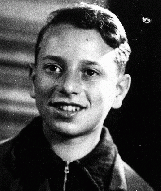
-
Wolfgang Lachman
ID CardWolfgang was the only son of observant Jewish parents living in Berlin. Though trained as a mechanical engineer, Wolfgang's father ran a wholesale kerchief and handkerchief business that he had taken over from his father-in-law. Wolfgang's family lived in an apartment above the business. They enjoyed vacationing at their country home in Neuenhagen, a suburb of Berlin. 1933-39: Wolfgang began school when he was 5; that year Hitler was named leader of Germany. Every morning they had to sing three songs: the…

-
Jenine Gutman
ID CardJenine was the younger of two daughters born to Jewish parents. They lived in a small city with a large Jewish population in central Moldavia. Her father, a veteran of World War I, came from a large family and Jenine had more than 15 aunts and uncles, all living in Bacau. This extended family helped raise Jenine and her sister Sofia while their parents ran a grocery store. 1933-39: Just like every child her age, Jenine belonged to a national youth organization headed by Prince Michael. They wore special…
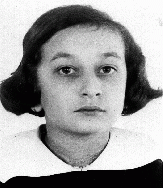
-
Paul Matasovski
ID CardPaul was one of three children born to Jewish parents. They lived in a small city with a large Jewish population in central Moldavia. Paul's Ukrainian-born father had been stationed in Romania during World War I, and chose to remain there rather than return to Ukraine after the 1917 Russian Revolution. 1933-39: Paul's household observed the Jewish holidays. He loved Passover with its special meals and the opportunity to show off new clothes. On the radio his family heard about the Nazis in Germany; in…
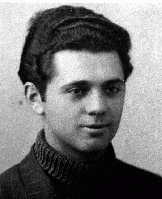
-
Matvey Gredinger
ID CardMatvey was the youngest of three children born to a Jewish family. The Gredingers lived in the town of Vertujeni, which was located in Bessarabia, a region of Romania. His father was a kosher butcher, preparing meat, especially chicken, for sale in his kosher shop. Matvey attended a Jewish school where he studied Jewish history and Hebrew. 1933-39: The Gredingers heard stories from other towns about antisemitic groups, especially the League of National Christian Defense, harassing and sometimes attacking…
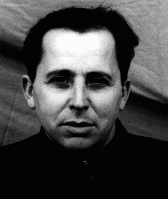
-
Eva Gredinger
ID CardEva was one of three children born to Jewish parents in Vertujeni, a Bessarabian town that was 90 percent Jewish. Eva attended a public school. Her family was religious, attending synagogue every day. Eva's father made his living as a kosher butcher, preparing chicken according to Jewish dietary laws. 1933-39: In 1936, when Eva was 15 years old, her family moved to Vysoka, where she later got a job as a seamstress. Vysoka was very different from her hometown. There were only about 15 Jewish families in…

-
Edith Fuhrmann Brandmann
ID CardEdith's village of Kriesciatik was located on the border between Romania and Poland. Her Jewish parents owned a large ranch where they raised cattle and grew sugar beets. They also owned a grocery store. Edith had a brother, Jacob, and a sister, Martha. At home the family spoke Yiddish and German, and Edith learned Romanian after she began school. 1933-39: Edith's village was by a river, and she spent summer days by the water with her friends, swimming and playing. Her mother would pack her bread and…

